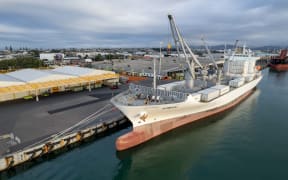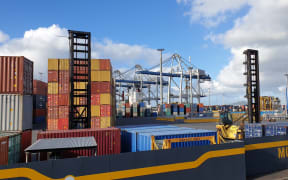
Inventory levels have been kept high adding to costs when warehouses fill up and new storage is needed, an expert says. Photo: 123RF
Supply chain challenges are expected to increase and become more complex next year, as the industry grapples with a long list of international and domestic risks as well as rising costs.
In addition to ongoing disruptions to supply chain networks, Massey University's Supply Chain Risk Analytics Network (SCRAN) report identified the forecast economic downturn, geopolitical risks associated with the war in Ukraine, high inventory levels and labour shortages among the top concerns.
Massey senior lecturer in supply chain management, Dr Carel Bezuidenhout, said supply chains had improved over the past year but had not recovered completely.
"The new global financial realities are now the stronger forces at play. These forces are less likely to cause major disruptions to our supply chains, but high costs and slow markets will weigh us down significantly," he said.
Additional risks also included cyber-security, Covid-related disruptions, especially in China, next year's general election, natural disaster events and extreme weather, product rationing and high demands on warehousing, along with rising transport costs and the unavailability of imported equipment and spare parts.
SCRAN's survey of 172 supply chain practitioners indicated nearly nine in 10 expected job pressures to increase, with a wider range of more complex tasks, including inventory management and staff recruitment.
"Inventory levels have been kept high to deal with disruptive supply chains over the past two years, while demand is now low," the report said.
"This drives a range of inventory related costs and places additional pressure on supply chain practitioners, especially when warehouses fill up and alternative storage needs to be secured."
In addition to higher costs associated with holding inventory, Bezuidenhout said there was also concern about difficultly in sourcing raw materials, which prompted some importers to take a just-in-case approach to ordering.
"There is still a significant global bullwhip effect in many supply chains and waves of under and over corrections in inventory levels will continue well into 2023," he said.
Labour shortages also topped the list of concerns, with shortages at all points in the chain, including ports, warehousing, transport, casual labourers and specialist skilled personnel.

Labour shortages from labourers to specialist skilled workers are also affecting the sector. Photo: 123RF
The labour shortages were also driving cost pressures, with higher salary expectations and concerns about the potential for labour strikes in the year ahead.
While international shipping constraints had eased somewhat, trans-Tasman services were lagging behind.
The large order book for new vessels also posed a risk to the industry.
"Shipping companies may come under financial strain in 2023 and further consolidation of this industry cannot be ruled out," it said, adding services could be affected later in 2023 and into 2024.
"Domestically, supply chain practitioners expect prices of freight services to increase in 2023."







